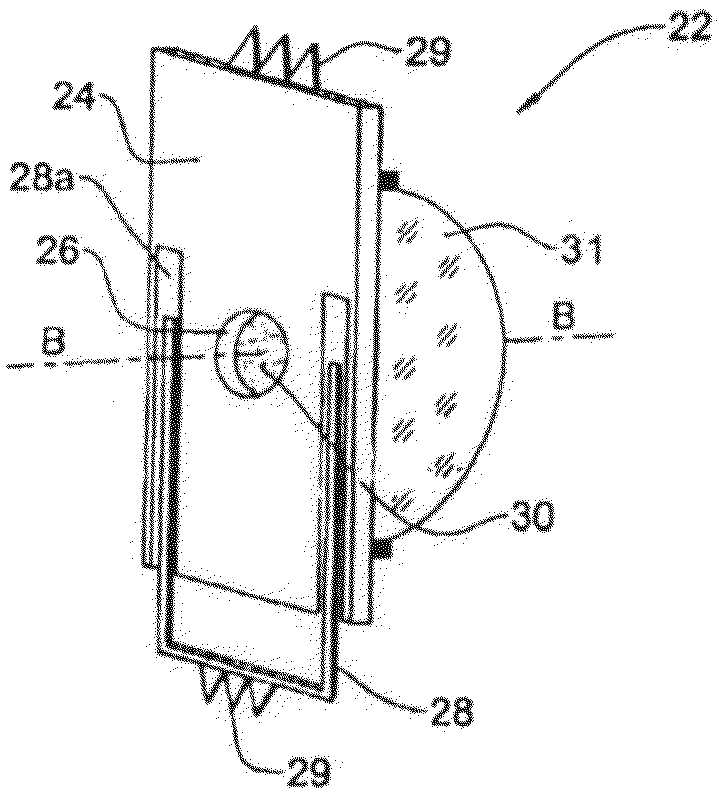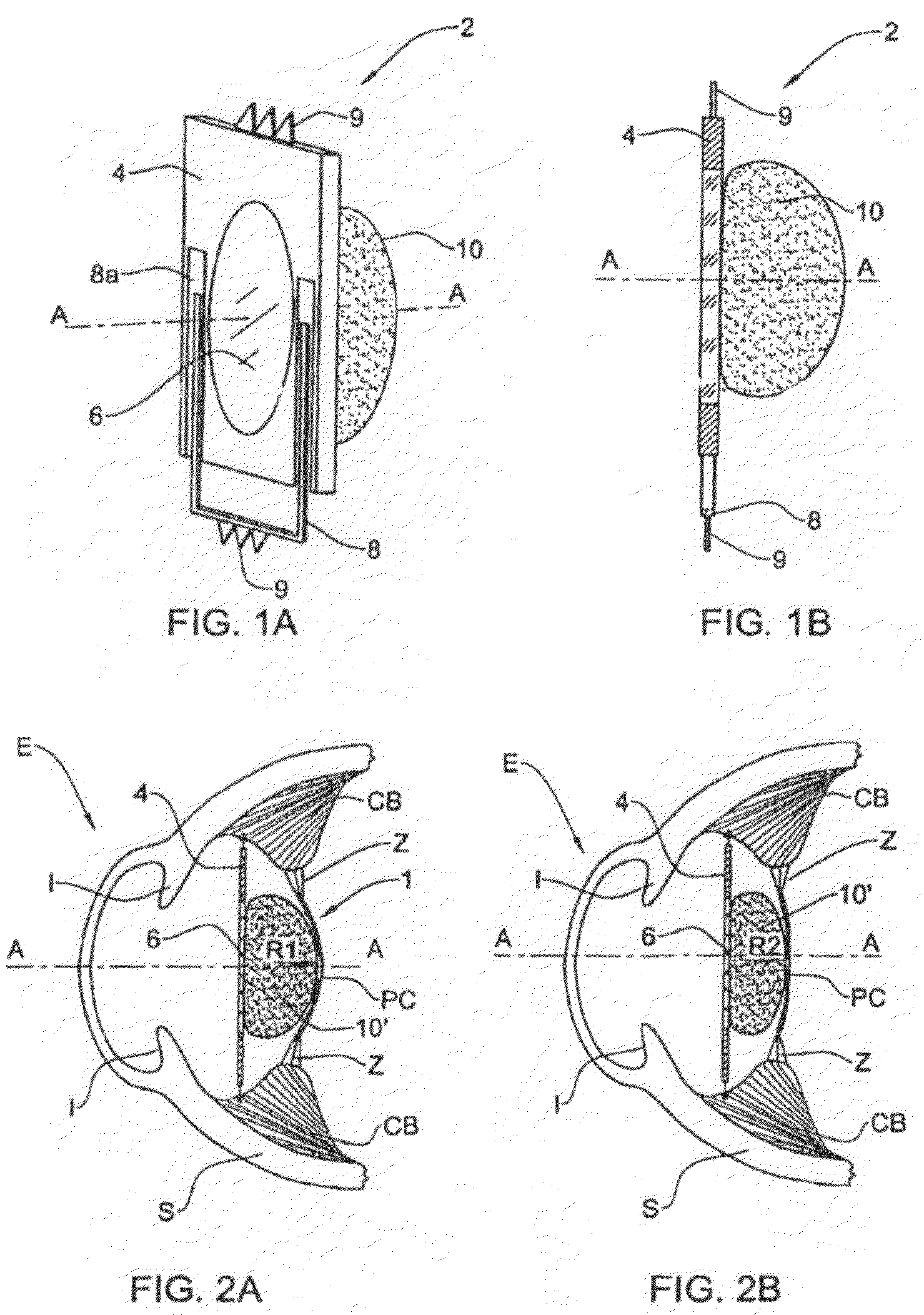Accommodating lens assembly
a technology for accommodating lenses and lenses, applied in the field of intraocular lenses, can solve the problems of fixed refractive power, inability to change the focus, and variable degrees of blindness, and achieve the effect of simple and inexpensive construction and large variety of designs
- Summary
- Abstract
- Description
- Claims
- Application Information
AI Technical Summary
Benefits of technology
Problems solved by technology
Method used
Image
Examples
Embodiment Construction
[0036]The subsequent description and figures refer to different examples of an accommodating lens assembly of the present invention and its functional position as implanted in a human eye E. As shown in FIGS. 2A, 2B, 4A, 4B, 5A, and 5B, the eye E, which is filled with natural gel (not shown) having an index of refraction of about 1.3, comprises a scleral wall S, an iris, and a retina R (not shown). The eye E further includes a ciliary body CB, from which extend zonules Z connected to a posterior capsule PC. These last three parts of the eye E constitute the capsular unit 1.
[0037]One example of an accommodating lens assembly in accordance with the present invention adapted for implantation within the eye E is shown in FIG. 1A in plan view and in FIG. 1B from a side view. The accommodating lens assembly 2 has an optical axis A-A and comprises a rigid haptics plate 4 having a first lens 6 made of a rigid material having an index of refraction higher than that of water. The plate 4 furt...
PUM
 Login to View More
Login to View More Abstract
Description
Claims
Application Information
 Login to View More
Login to View More - R&D
- Intellectual Property
- Life Sciences
- Materials
- Tech Scout
- Unparalleled Data Quality
- Higher Quality Content
- 60% Fewer Hallucinations
Browse by: Latest US Patents, China's latest patents, Technical Efficacy Thesaurus, Application Domain, Technology Topic, Popular Technical Reports.
© 2025 PatSnap. All rights reserved.Legal|Privacy policy|Modern Slavery Act Transparency Statement|Sitemap|About US| Contact US: help@patsnap.com



